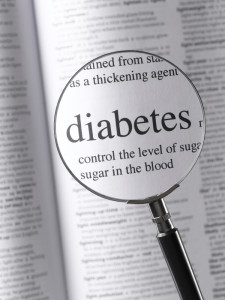 How does diabetes affect the eyes?
How does diabetes affect the eyes?
Diabetic eye disease can occur for anyone who has been diagnosed with diabetes. Have you been diagnosed with diabetes? Have you had a recent diabetic medical eye examination?
If you have diabetes, your body cannot use or store sugar properly. When blood sugar gets too high, it can damage the blood vessels in your eyes, causing leakage and bleeding. Damage to the retina (the back layer of the eye) by diabetes is called diabetic retinopathy. Early changes may not be noticeable to you, but can be seen by a doctor during a dilated eye exam. If caught early, leaky or abnormal blood vessels can be treated by laser before vision is lost. Untreated leakage may lead to blindness.
Frequent changes in blood sugar levels or uncontrolled diabetes increases your risk of diabetic retinopathy. Usually people don’t develop diabetic retinopathy until they’ve had diabetes for several years, but many people have been diabetics for several years before they are diagnosed. Thus, once you’ve been diagnosed with diabetes, you should have a dilated eye exam and thorough retinal exam at least once a year.
Anyone who is diabetic is at risk for diabetic retinopathy. Both insulin-dependent and non-insulin-dependent diabetics are at risk for eye damage due to diabetes.
In the early stages, you may not even notice changes in your vision.
Diabetic Eye Problems: Symptoms of Diabetic Retinopathy
- Floaters
- Difficulty reading or doing close work
- Double vision
- Blurred or hazy vision
- Seeing red out of one eye
Patients with significant diabetic retinopathy can avoid substantial vision loss if treated in time. Early detection is why it’s so important for a yearly dilated eye exam.
Preventing Diabetic Eye Disease Problems
- Use common sense and take care of yourself
- Keep your blood sugar under control
- Maintain a healthy diet
- Regular exercise
- Follow your doctor’s instructions
- Have a yearly dilated eye exam by an ophthalmologist
